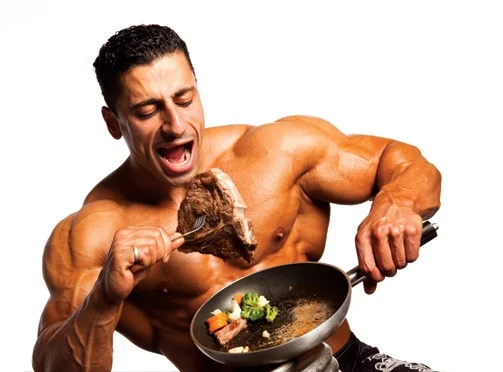The 5 Rules of Gaining Muscle Mass
We’ve compiled a list of the 5 most important nutrition rules to help you get the best gains from your workouts. Here they are in order of importance
Pack on the pounds
Whenever you start anything new, there’s always a learning curve and you’re bound to make a few rookie errors along the way. In bodybuilding there are two main mistakes beginners tend to make
Following a training program that’s not appropriate for their goals
Underestimating the importance of nutrition
You don’t grow just because you train; growth is actually dependent on proper recovery from training. And the way you recuperate best is by providing your body with the nutrients it needs at the appropriate times for optimal recovery and growth. Your goal is to add lean mass — muscle tissue. That’s true whether you’re a hardgainer, a guy with good genetics or a guy who carries excess bodyfat. Here are the basic nutritional principles you need to support your training to maximize your chances for muscle growth right out of the gate
Make sure you consume adequate calories every day
The bottom line is you can’t add weight if you aren’t taking in more calories than you’re burning. If you’re trying to pack on muscle, you have to consume enough surplus calories to support that growth. If you’re heftier to begin with, this task is a little trickier. You need to get enough calories to add muscle mass, but you also want to avoid an excessive increase in bodyfat. While you’re adding muscle mass, you should regard maintaining or just slightly increasing your bodyweight as progress
Split your total calories fairly evenly over 5–6 meals per day
This recommendation is a bodybuilding standard. The more frequently you feed your body, the better the contribution you’re making to build muscle mass while at the same time avoiding the addition of bodyfat. If you consume 3,000–4,000 calories over six meals versus just three meals, your metabolism will stay elevated and you’ll gain more muscle and much less bodyfat. Those who consume the same number of total calories, but in fewer, larger meals, however, send their bodies the signal to store bodyfat
Take in at least 1 gram of protein per pound of bodyweight each day
When you want to build muscle tissue, you have to provide your body with the amino acids it needs. These aminos (there are 22 in total, essential, nonessential and conditionally essential) come from protein foods and protein supplements. Eating a variety of different protein sources is the best way to make sure you get a broad range of aminos. By targeting at least 1 gram of protein per pound of bodyweight, split fairly evenly over your six meals, you’ll keep a steady flow of aminos in your bloodstream to fuel growth
Eat plenty of fruits and vegetables
Many beginners focus too much on protein or calories at the expense of other types of foods that are dense in nutrients per calorie. Make sure you get in at least six servings of vegetables and fruit each day. They’re low in calories but rich in vitamins and minerals to support gains and overall health. At larger meals, you should consume more than one serving and you can do your body an even bigger favor by having a few different fruit or veggie items on your plate





